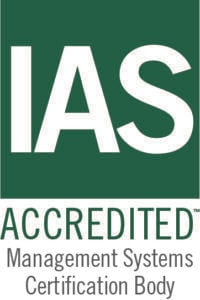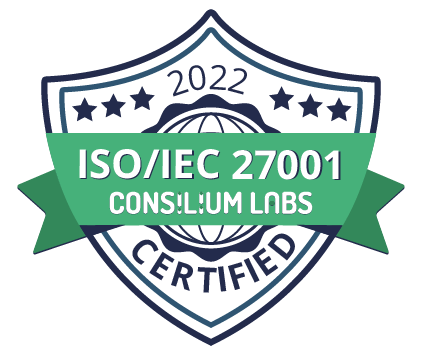Every day, we are faced with choices.
Some of those choices are relatively easy, like deciding what to have for breakfast or choosing a movie to watch (okay, that one maybe isn’t as easy). However, in the corporate world, organizations are consistently dealing with uncertain challenges that require immediate and effective problem-solving.

Even the most seasoned executives struggle when faced with tough decisions, and understandably so. It’s hard to manage and determine where to start, who should be involved, what information is needed, and how to gauge whether the optimal decision is the best one. Ultimately, the best decisions come from maximizing as many opportunities as possible throughout the decision-making process.
Getting started on the right foot is made easier when you're able to define budget constraints, identify relevant stakeholders, and implement structure into your decision-making processes. Working from a proven decision-making methodology is also incredibly effective in keeping things moving in the right direction. And once you've reached your final decision, having technology in place to measure whether you've made an optimal decision can help you fine-tune the process next time around.
Even organizations who have become comfortable with their standard operating procedures, or simply have never noticed issues with their decision processes, can benefit by adopting a number of proven solutions to maximize the value of their decision-making methods Do you feel like your teams have room to improve? If so, take a look at just some of the ways you can begin baking structure, accountability, and transparency into your decision-making process in order to achieve the best possible outcomes.
Accept That There’s Room to Improve
A study conducted by McKinsey found that while 57% of respondents felt their organization made high-quality decisions only 20% actually demonstrated the ability to make high-quality decisions fast. The truth is that many organizations aren’t actively analyzing the effectiveness of their decision-making processes, and thus aren't aware of any opportunities for improvement.
If your mindset is that your organization is making high-quality decisions on a consistent basis, then naturally, you’re not going to seek out ways to improve an already efficient process. Don’t let hubris stand in the way of welcoming change to the way your teams make decisions.
Accepting that your current way of operating isn’t perfect is the first critical step towards making better decisions. Once all key players are open to the idea of measuring and improving decision-making processes, then the real work can begin.
Start (and Finish) From a Place of Structure
If you’re using spreadsheets to track communications and organize thoughts, this section is for you. Consider all of the moving parts that happen throughout the decision-making process. Budget constraints, team bandwidth, meeting availability, and varying opinions will always be evolving, meaning your decision-making process needs to be able to accommodate these changes while keeping things moving forward.
Working from a place of structure enables your team to benefit from repeatable, transparent processes that can be emulated for future use. When you embrace structure and ensure all relevant data is being collected, is easy to update, and properly stored to communicate interrelationships, you’re better able to justify your optimal decision by thoroughly explaining your decision-making journey from start to finish.
Take the time to synthesize all relevant decision-making information into a centralized platform if you’re looking to avoid obstacles and not have to backtrack down the road.
Properly Manage Resource Allocation
There are many projects going on all at once as teams work to make an optimal decision, so how do you know which ones are most important to the overall objective? We all strive to make optimal decisions, but knowing the combination of projects that maximizes our objectives requires more than spreadsheets.
Hunches and gut feelings can be modelled alongside real data and foolproof justifications when you make complex business decisions. Decision processes that permit you to define different intensity levels for projects combined with resource allocation methods enable you to stretch your discretionary resources.
Effective resource allocation will result in a portfolio of projects that will maximize contribution to the achievement of objectives, subject to constraints and cognitive of project risk.
Prioritizing your projects and providing more assets to the ones that add the most value will enable you to say yes to more people in your organization and ensure resources are being allocated appropriately.
Ensure Consensus Across the Board
Each member of your organization brings a unique perspective and skillset to the decision-making table. Ultimately, achieving consensus isn’t about ensuring everyone is happy with the final decision. More often than not, there will be disagreements around what's best for the organization.
In reality, consensus refers to ensuring the decision-making process was complete, thorough, and indicative of everyone’s opinions, as opposed to just a handful of executives.
Throughout the decision-making process, you should be leaning on your subject matter experts to provide their input and guide internal discussions. Having the individuals who are 1) most familiar with the decision topic at hand, and 2) are impacted the most by the final decision is imperative to ensuring no hidden alternatives are left uncovered.
Getting decision-making consensus from all relevant stakeholders throughout each stage of the process will decrease the chances of your team having to revisit previous discussions and reconsider alternatives. Consensus can also help improve stakeholder buy-in across the board.
Get the Most out of Your Decision-Making Processes
Achieving speed, quality, transparency, and accountability with every decision your organization makes requires you to commit to maximizing the opportunities in front of you. Having structured decision-making processes in place from the get-go does a lot to set your team up for success, so ensure your processes are based on proven methodologies and models before you get too deep into the journey.
For organizations aiming to implement collaborative decision-making solutions, Expert Choice is here to help. Through Comparion®, we enable teams to structure problems in a clear, understandable fashion. We also provide the tools needed to precisely measure the importance of competing objectives and alternatives, which allows you to accurately synthesize information, expertise, and judgments in order to make the best decisions.
Contact us today to learn how we can help you maximize opportunities to ensure you’re consistently making optimal decisions.











